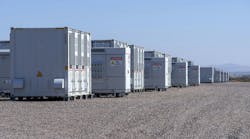Last June, I wrote a column titled "Sun Wars" that discussed the conflict between utility-scale solar (big solar) and rooftop solar advocates. Chief among the complaints voiced by big solar advocates was the lack of a level playing field. They cite net-metering policies that allow rooftop solar owners to sell their power into the grid at retail rates as being inherently unfair when they receive lower wholesale market rates for the same power. On the anniversary of that article, I thought it would be interesting to see how the "war" is going.
While the net-metering issue continues to be debated across the country, big solar is not standing still. According to the recent Solar Energy Industries Association/GTM Research joint report "Solar Market Insight 2015 Q4," big solar added 4.15 GW dc in 2015. This figure represented a 6% increase over 2014.
The forecast for 2016 is even more interesting. Because of numerous projects that were placed into the development pipeline in anticipation of a reduction in the U.S. federal investment tax credit (ITC) that was extended through 2019 at the 30% level, big solar is expected to have an additional 9.5 GW installed by the end of this year. That amount will be more than the last three years combined. It is impressive growth, particularly when one considers that in 2007 there were no utility-scale solar projects in the U.S.
Something else interesting has been forecast to occur this year. According to a recent GTM Research report, 2016 will be the first year that big solar projects commissioned for reasons other than meeting state renewable portfolio standards (RPS) exceed those commissioned principally for meeting state goals. This trend is expected to continue into the future.
What then is driving this interest and growth? Clearly, the ongoing ITC is a main consideration, but there are other forces at work as well. Falling prices are having an impact, particularly when solar projects are pursued beyond that required by state RPS mandates.
According to National Renewable Energy Laboratory, the price for big solar photovoltaic dropped from around 21 cents per kilowatt-hour in 2010 to 11 cents per kilowatt-hour in 2013. That is almost a 50% reduction. While much of the reduction has come from declining module costs, inverter and so-called soft cost also have come down for big solar.
Recently, several utilities have announced solar purchase power agreements in the 4 cents per kilowatt-hour range with a Palo Alto, California, 25-year purchase power agreement reportedly coming in as low as 3.7 cents per kilowatt-hour. Under that arrangement, Palo Alto would also have the option to extend the agreement to 40 years. Purchasing energy at a fixed price for decades represents an attractive price hedge. While big solar will not offer the operational certainty that utilities are fond of, and it is certainly not at the bottom of the energy price stack yet, it does offer fuel price predictability in an otherwise chaotic business environment.
How then is rooftop solar fairing in this time of declining photovoltaic module costs? Where as the SEIA/GTM report indicated that big solar has seen a steady quarter-over-quarter decline in average cost from 2014 to 2015 ending at a level of $1.33 per watt dc, the same report indicates rooftop solar costs have remained around $3.50 per watt dc over the same period.
Why the static cost numbers for rooftop? While rooftop solar has also enjoyed a decline in module cost, an increase in soft costs is offsetting much of this decline. The SEIA/GTM report stated "…in the past year, soft costs have actually risen on an industry average basis by 7%, primarily due to rising customer acquisition costs." Translated, this means rooftop solar companies are spending more to convince people to put solar on their roofs.
It appears the current price advantage goes to big solar. Writing about the big solar boom in Vox, a clearly enthusiast David Roberts said, "It won’t be long before the discussion about environmental benefits is moot — utilities will demand solar because it’s the cheapest power available." I’m not sure when that will be, but with their costs still declining, big solar is moving in the right direction.
Looking to the future, big solar companies like First Solar are focused on reducing costs to prepare for the expected demise of the ITC and along the way creating more demand for their product. First Solar’s CEO Jim Hughes has even called the expiration of ITC "irrelevant" to their future plans. Last year, Hughes predicted they would install solar on trackers for less than $1 per watt by 2017. Given the recent data, he may well do it.
On the other hand, given the cost structure of rooftop solar and the ferocious battles that rooftop companies wage when threatened by the elimination of net metering incentives, it would appear that incentives are not only relevant but critical to the ongoing health of the rooftop industry.
So it would seem that without incentives, the scales would clearly tip in favor of big solar. Additionally, it would seem that if we are going to have big carbon-reduction goals, we also need big solar if we hope to keep the price of electricity somewhat reasonable.

